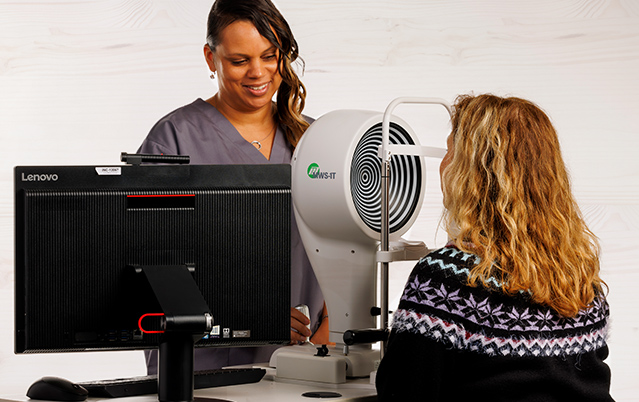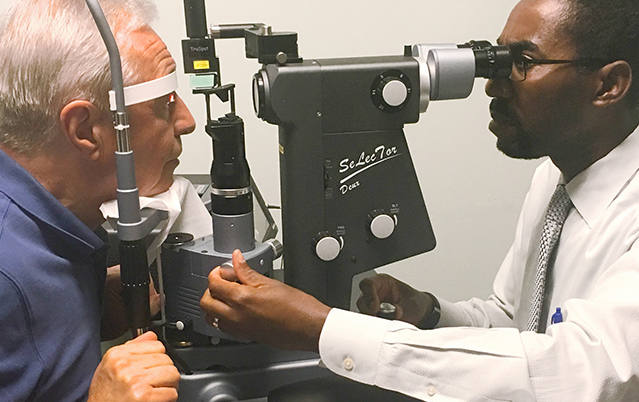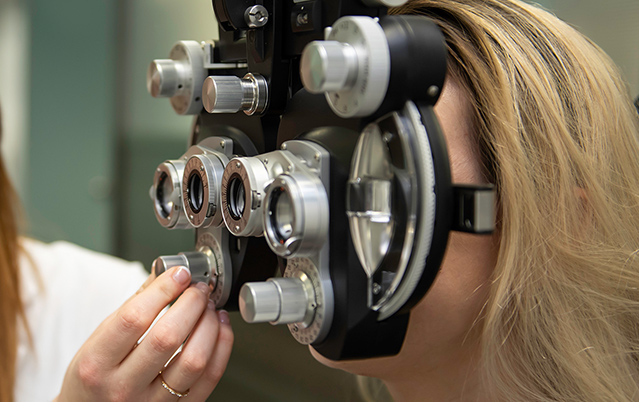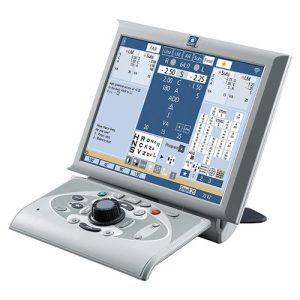What are the questions you need to ask when you are considering the purchase of a digital refractor? You are making a key decision . . . NEVER allow the manufacturer to diminish or dismiss any question you may have.
1. Under the Hood
What operating system is used by the refraction system? How often is the software updated?
The most critical component of a refraction system is the computer’s operating system along with the software and its ability to be updated to keep up with changing needs. Software updates demonstrate continuous development.
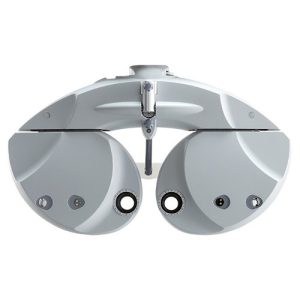
2. EMR Integration
How easily can this system integrate with your EMR system? Check with your EMR Company. Is it cloud-based? You may not be using Cloud today, but you could be using it tomorrow.
Integration between a digital refractor and an EMR system is quickly becoming a ‘must have’ capability rather than
just a ‘nice to have’ feature. This process alone can save 3 – 5 minutes per exam.
First: Does the system have a confirmation screen for you to review the data, because in a fully integrated system
this should be the last time the numbers are entered?
Second: Check with your EMR Company about which digital refractor companies are best to work with. You
will either significantly benefit from, or be at the mercy of, the relationship between these companies.
Third: Determine if the digital refractor company has developed its own integration package for the EMR
company. If the entire integration is put on the EMR Company, a simple digital refractor software upgrade
could break integration, corrupt data and definitely disrupt your practice.
Fourth: The emerging technology of cloud-based EMR integrations should be considered – which many EMR companies are moving toward. Is the digital refractor company ‘working on’ or able to demonstrate this competency?
3. Operating Speed
How quickly can the system compare the old prescription vs. new for your patients?
The ability to quickly show the patient’s habitual prescription vs. the new Subjective prescription by itself will justify your investment into a digital refractor.
4. Split Prism / Automatic Jackson Cross
Does the system induce monocular diplopia or split prism function? Why do you need the ability to do a split prism?
The split prism function presents of both JCC images to the patient, virtually eliminates the stress of answering
the dreaded “1 or 2”.
5. Advanced Binocular Testing
What special tests can be done? How many steps/button presses are involved in performing special testing?
Multi-tasking instruments always increase efficiency. Most doctors say they perform more accurate refractions on the digital refractor since they can do a more thorough exam in less time. The key thing to look for is how easy is it to utilize and document your special testing findings. Valuable efficiencies are lost when there are 3+ button pushes to perform special tests, i.e. binocular balance, phorias, NRA/PRA.
6. Efficient Utilization
How fast is the system to learn? How much time will you save updating to this particular automated refractor?
When evaluating digital refractors from an efficiency and productivity standpoint, look at the big picture, especially
the ease of use and accuracy of the pretest instruments that feed the data in and the data transfer process.
7. Practice Efficiency Consultation / Change Management
What recommendations to your work up process is the company making? Who is available to help coach you through these changes? Can the company help you implement workflow change to yield the ROI you’re expecting?
The real efficiencies of digital refractors are only experienced when the proper patient flow is in place and the practice resources are maximized. Ask for recommendation specific to your practice and go with the company that you feel can help you execute the agreed to strategy.
8. Company support structure
What forms of staff training are available? Do they offer online training? Do they have
product manager support at the corporate office?
Do not underestimate the value of training process both in the field and by the company. The training process will provide the ultimate insight into the digital refractor company’s commitment to your success. Be clear on the type of training that is included with your purchase.
9. Market share = Technology advances
How many of the company’s systems are in service and where are they relative to your
practice? What market share does the company own? How long has the company been in the automatic phoroptor business and are they stable? Ask the company for 3 local references.
The larger the community the more rigorous ‘real life’ testing the product has endured. An additional benefit comes indirectly from other user’s feedback IF the company responds and updates its software (see Q1). Last, the ability to help you implement and properly support a digital refractor is directly proportional to the company’s experience.



